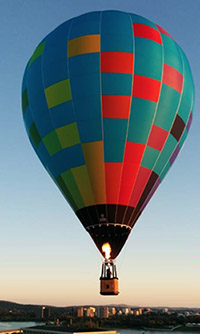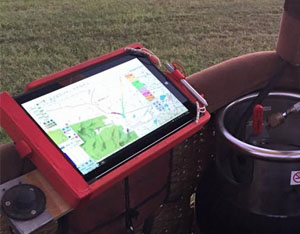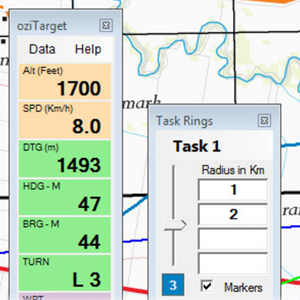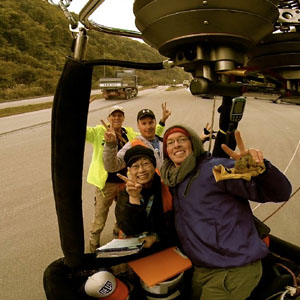Team Gear
Balloons and technology used by the team
For a sport that relies on many basic principles, there is a lot of specialised equipment and technology that is used by pilots in competitions.
 The Balloons
The Balloons
Competition pilots typically fly very small (1-2 person) balloons called ‘Racers’. These competition balloons are very responsive and allow pilots to accurately and quickly fly them to different heights to catch the winds they require. It is not only their size that makes them responsive, but also their design. Racer balloons are thinner than traditional balloons, which makes them more streamline which creates less air resistance when going up and down.
Most of the Australian Balloon Team fly Kavanagh EX60s (60,000 cu.ft.) racers, designed and manufactured in Sydney, Australia by Kavanagh Balloons. The EX60 was designed by experience competition pilot, Sean Kavanagh, who will be one of the pilots at the 2018 World Championships.
In Basket Technology
 Pilots use a variety of technologies in the basket to help with navigation and communication
Pilots use a variety of technologies in the basket to help with navigation and communication
Standard ballooning equipment includes altimeters and radios for communication with the ground crew, other balloons and other aircraft. However, competition pilots will also carry laptops (or tablets) connected to GPSs to run moving map technology. The Australian Balloon Team pilots and ground crew generally use Microsoft Surface PRO 3 or 4 laptops.
Software
oziTarget is an extension to the popular mapping tool Oziexplorer, created by Australian Team Manager, Sean Kavanagh. It has been written to give competition balloon pilots the extra tools needed in preflight planning and during their actual flights.
 The main functions include the following;
The main functions include the following;
- a customisable dashboard for all the important navigation information
- drawing multiple rings or arcs for minimum and maximum distances or 3D tasks around waypoints
- drawing windreader data for flight planning
- drawing of scoring areas and lines
- tracking multiple waypoints for tasks such as a hesitation waltz.
- recording of the latest wind data during flight as experienced by the balloon
- quick entry and positioning or waypoints using 8 figure grid references as given on task sheets
- marker drop angles for use with a clinometer
- AGL calculations based on DEM data
Cameras
 Some people say “what is the point in doing well if there was no one there to see it”. The Australian Balloon Team are renowned for capturing and sharing spectacular video footage during competitions. Most of the pilots will carry numerous GoPro cameras, mounted inside and outside of the basket, which capture all the action automatically during the flight.
Some people say “what is the point in doing well if there was no one there to see it”. The Australian Balloon Team are renowned for capturing and sharing spectacular video footage during competitions. Most of the pilots will carry numerous GoPro cameras, mounted inside and outside of the basket, which capture all the action automatically during the flight.
Some cameras are mounted on gimbals to provide very steady footage, even when the balloon is moving around during fast ascents and descents.